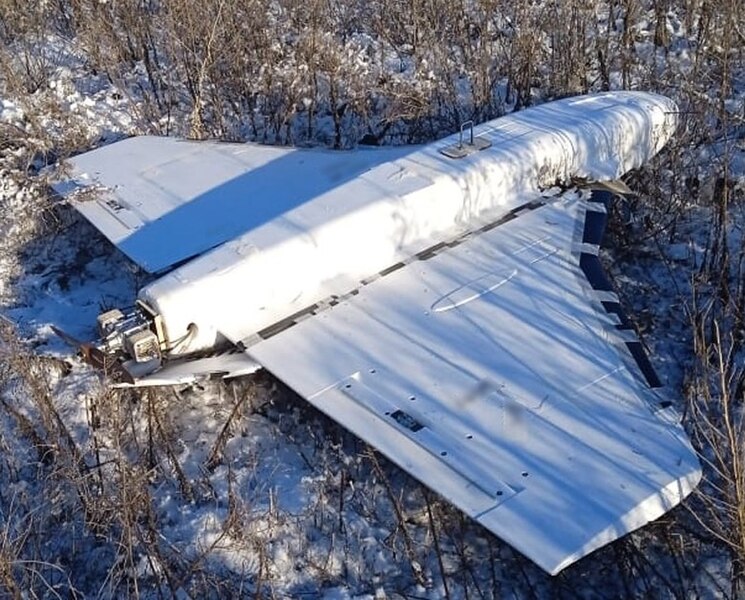UPDATED 21 SEPTEMBER 2025 (paragraph Russian Gerbera drone, paragraph Support aircraft from NATO and Poland and new final paragraph) | A total of 21 Russian drones flew into Polish aerospace on Wednesday 10 September, triggering an unprecedented response by Polish and NATO fighter jets: shooting down the enemy planes. Half a week later, the Polish armed forces and civil protection authority have sharpened their routines. At the same time, Putin’s Russia has likely got valuable information on how NATO reacts to Moscow’s provocations. The planes may have been pilotless, but experts believe that they were sent by Putin on purpose.
It were Royal Netherlands Air Force (RNLAF) F-35As, forward based at Poznañ Airbase in Central Poland, and Polish Air Force F-16s, coming from either Poznañ or Łask, that used their weapons in the defence of NATO airspace against a clear and present Russian threat for the first time. On the ground, air defence system including German Patriot units were activated – at least in tracking the air threats.
Russian Gerbera drone
According to the Polish government, Russia sent a total of 21 drones into Poland – all are believed to be of the Gerbera type with a wingspan of 2.5 metres (82 feet). It was not the first time that drones violated NATO airspace. At least one, possibly two Gerberas flew into NATO’s airspace over Lithuania in July 2025. However, in this case, the Lithuanian National Crisis Management Centre (NKVC) judged on 17 September they entered the country by mistake. The Gerbera is a cheaper, less capable Russian copy of the Shahed, which Iran has been supplying Russia with for some time.

Support aircraft from NATO and Poland
The Russian violation lasted for about 9 hours, with a Swedish-made airborne early warning and control Saab 340 AEW&C of the Polish armed forces in the air to support the operation. From Eindhoven Airport in the Netherlands a NATO tanker fleet Airbus A330 MRTT flew in – with at least one refuelling high up in the air with likely RNLAF F-35s taking place somewhat east of Kraków. The tanker aircraft flew with its transponder on, making it visible on flight radar sites. Moreover, Polish Mi-17 and S-70 Blackhawk military helicopters were sent airborne to locate the drones. Shortly after, the Czech armed forces announced they would send a Mi-17 helicopter unit with 150 personnel on a 3-month deployment to Poland to support its neighbour in any future Russian drone incursions.
France announced it would send three of its Dassault Rafale fighter jets to Poland to beef up the air interception force for possible future Russian drone incursions.
300 kilometres from the borders
At least 17 drones reportedly have been found as far as Gdańsk, about 300 kilometres (186 miles) from the borders with Ukraine and Belarus from where the Russian drones were entering Polish airspace. Both international airports of Warsaw (Chopin and Modlin), and the major supply airport of Rzeszów (Jasionka) were closed during the night, as well as the less important airport of Lublin. People across the country – including in Poland’s second-largest city of Kraków – received SMS alerts that if they would find a drone to report it immediately to the police and not approach it. The SMS system (Alert RCB) is normally only used for weather alerts, bringing the Russian provocation to many people’s homes – far from the battlefields in Ukraine.

Air raid sirens
Of the 21 drones at least four were shot down and found in the villages of Czosnówka and Cześniki in Eastern Poland, and in Mniszków near Łódź in Central Poland. While air raid sirens did not go off during Wednesday’s wave, Polish news reports indicate that next time they will be engaged. A few days after the Russian operations over Poland, the Polish authorities installed a no-fly zone up to 10,000 feet (about 3 kilometres) at the entire length of the borders with Ukraine and Belarus.
Hungary Air Force operating in Russian and Belarus skies
This does not affect airlines, as they normally fly higher. But since the EU sanctions, there is hardly any air traffic crossing the borders anyway. However, do note that a Hungarian Air Force (HUF) Airbus A319 flew all the way from Russia, into Belarus and crossing into Poland hours after the nightly operations. Visible on public flight radar sites, HUF273 crossed Polish aerospace, continuing into Slovakia shortly after 16:00 CET heading further south towards its home in Hungary. Here, pro-Russian authoritarian Prime Minister Viktor Orbán is the boss.
Disinformation campaign
Poland’s authorities warned against a disinformation campaign by Russian bots or groups on social media to create panic among the Poles. The campaign seemed to have included images of exploding drones on houses – but Nordicreporter.com was unable to verify this independently.
Russian provocations continued
Meanwhile, the Russian provocations continued, with at least two Russian drones flying into Rumanian airspace on Saturday, 13 September. The Rumanian Air Force scrambled two F-16 fighter jets, but let the drones fly, as they say that the unmanned aerial vehicles did not pose any danger to populated areas.
Update 21 September: Ukraine to help Poland
On 18 September, Poland signed an agreement with Ukraine with the latter going to train the Polish armed forces in anti-drone operations. “(Ukraine has) made a historic leap in drone and anti-drone capabilities”, Poland’s Defence Minister Władysław Kosiniak-Kamysz said during a visit to the Ukrainian capital of Kyiv. “want to benefit from (Ukraine’s) knowledge and skills.”
| © 2025 Marcel Burger, nordicreporter.com. Featured photo: A Royal Netherlands Air Force F-35 taking off from Volkel Airbase in the Netherlands, September 2024 (Photo: Marcel Burger)
